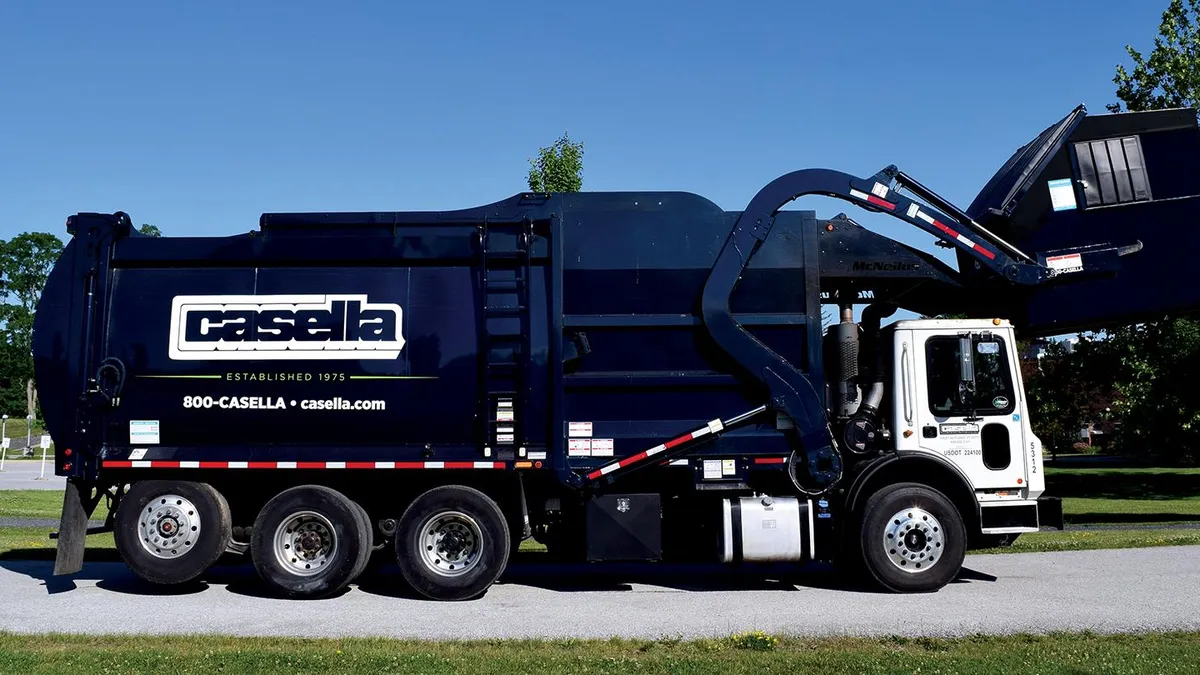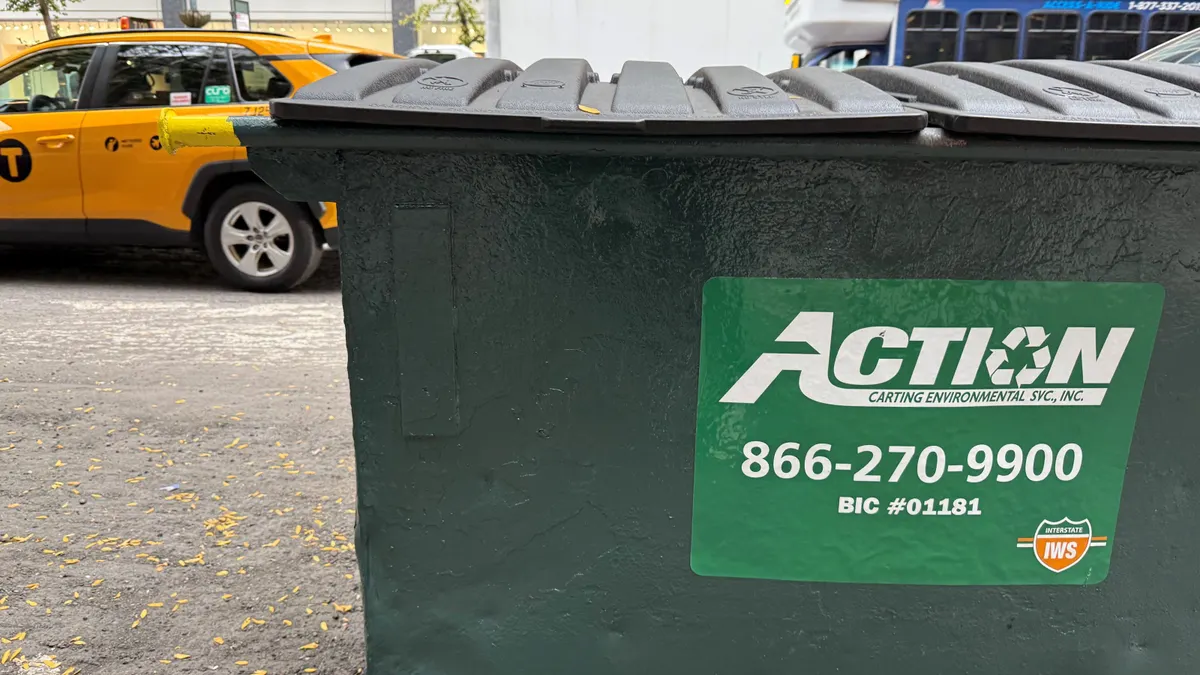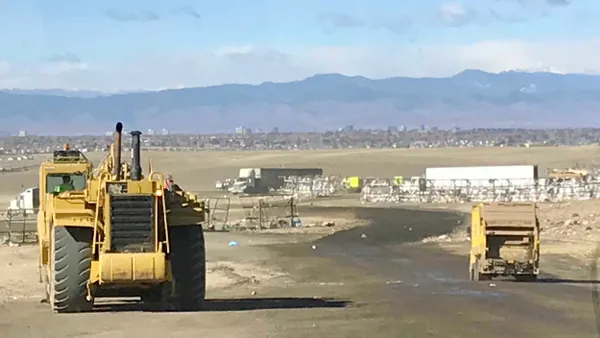UPDATE: March 12, 2019: The Campbell Town Board voted to approve a required zoning change for Casella Waste Systems to expand the Hakes Landfill at its March 11 meeting, according to WETM.
Dive Brief:
- Casella Waste Systems is looking to add 20.1 acres of C&D capacity to the Hakes Landfill in Campbell, New York, as reported by the Elmira Star-Gazette. The company is also proposing an additional 22.2-acre "soil borrow area" for construction and landfill cover.
- One key point of contention is the degree to which the landfill has become a source of radon, a naturally-occurring radioactive gas harmless in low doses but carcinogenic in higher concentrations. Casella stands by the site's safety, and a Dec. 2018 environmental impact statement from New York's Department of Environmental Conservation (DEC) largely concurred.
- Many local residents and activists disagree and are calling for a more thorough evaluation. This issue is expected to come up at a March 11 meeting of the Campbell Town Board, which will have to approve a zoning change for the project to proceed.
Dive Insight:
The Hakes landfill has been permitted for C&D debris disposal since January 1989 and received its first expansion in 1993. The site's most recent expansion to 57.9 acres was in 2006. According to Casella's latest annual report, the Hakes location includes up to 78 acres of permittable landfill space and can accept up to 500,000 tons per year.
DEC's environmental impact report evaluates a broad range of concerns, including terrestrial and aquatic ecological effects, noise and traffic issues and potential public health impacts. As a depository for shale cuttings from natural gas extraction in the Marcellus shale formation, the site requires careful management to prevent harmful accumulations of radium and minimize exposure to its radioactive progeny. Nearly all shale cuttings currently end up in landfills, and studies have shown the propensity for radioactive components of the cuttings to leach into the surrounding environment.
The expansion is opposed by the Sierra Club, the Concerned Citizens of Allegany County and the People for a Healthy Environment, among others.
Representatives of the Sierra Club claim that the DEC's draft impact statement failed to evaluate “the adequacy of the landfill’s liner system and groundwater suppression system to protect against the radium, radon, and their breakdown products" from contaminating nearby groundwater and surface water. They also raised concerns about repeated landfill fires potentially affecting the site's infrastructure and exposing radioactive materials. The Concerned Citizens of Allegany County also flagged "high levels" of radioactivity in leachate leaving the site, as well as leachate being recirculated.
Citing a hydraulic fracturing report published in 2015, the DEC posits that opponents' concerns are based on incorrect interpretations of existing landfill regulations and an inaccurate understanding of the science behind radon testing.
Among other sections covered in the impact statement, DEC also responds to concerns about the expansion's effects on area wetlands. While one comment argues that trying to "keep a landfill cell isolated from discharging into the creek during storms seems like a deliberate exercise in defeating gravity and hydraulics both at once," NYDEC inspectors remain confident that the potential impact is minimal.
Expansion of the Hakes site reflects Casella’s broader goals to increase its presence in upstate New York and follows multiple acquisitions in the Rochester area last year. The company also received annual permit increases at two other sites in New York’s Clinton and Chemung Counties, driving what it has described as a favorable competitive position amid a tightening Northeast market.










